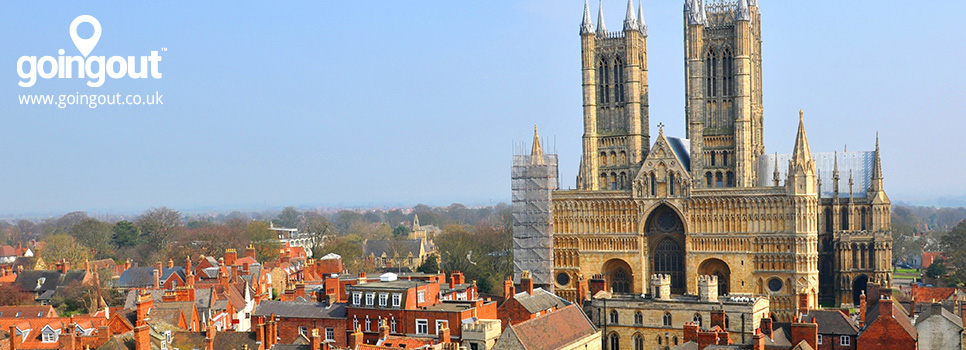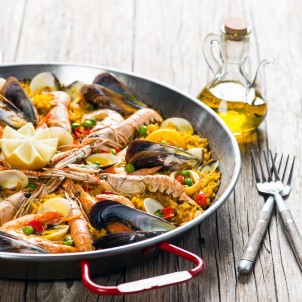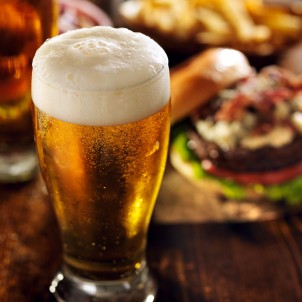Discover the best pubs & restaurants in Lincoln
![]() Town/City Name
Town/City Name
Lincoln
![]() County
County
Lincolnshire
![]() Population
Population
97,541

 About Lincoln
About Lincoln
Considered a cathedral city, Lincoln is a county town of Lincolnshire. There are 94,600 people in the non-metropolitan district of the town, but in 2011, Lincoln’s urban area was said to have a population of 130,200.
On the River Witham, Lindum Colonia sprung from an Iron Age settlement. The landmarks in the city include Lincoln Cathedral and Norman Lincoln Castle. The University of Lincoln is also famous in the city together with Bishop Grosseteste University.
When going out in Lincoln, a couple of areas you can check out are Lincoln Cathedral, Lincoln Castle, Upper Town and Steep Hill, Lower Town, and Brayford Waterfront.
Among these destinations mentioned above, the most famous would have to be Lincoln Cathedral. This is also called the Cathedral Church of the Blessed Virgin Mary of Lincoln and it displays Anglo-Norman architecture.
The variety of food found in the restaurants in Lincoln is characterized by the finest flavours, and the locations of these restaurants are also strategic. Located at spots with the best views of the town, there are also pubs in Lincoln that tourists often visit. There are pubs situated in the Cathedral Quarter, those found on the High Street, and some on the waterfront.
A lot of notable people hailed from Lincoln. Some of them are Aaron of Lincoln, Marlon Beresford, Sam Clucas, Peter Day, Rose Mead, Paul Palmer, and Steve Race.
 Places to eat in Lincoln, Restaurants in Lincoln
Places to eat in Lincoln, Restaurants in Lincoln
 Places to drink in Lincoln, Pubs and Bars in Lincoln
Places to drink in Lincoln, Pubs and Bars in Lincoln
 A brief history of Lincoln
A brief history of Lincoln
The recorded time when Lincoln has originated is said to be during the Iron Age. Settlements were composed of wooden dwellings which date back to the 1st century BC. This settlement can be found near a deep pool in the River Witham at a large hill’s foot.
The name Lincoln was thought to be from the word Lindon which means “The Pool.” This might have something to do with the location of the settlements.
In AD 48, the Romans conquered Lincoln and other parts of Britain. The name Lindon, which was Celtic, was then transformed into Latin, Lindum Colonia.
This settlement flourished during the Roman time, and many people accessed the town from the sea. They go through the River Withman and the River Trent to reach town. The town declined before the 5th century which led to it being deserted.
Germanic tribes coming from the North Sea area occupied Lincolnshire during the 5th and 6th centuries. The town’s then-Latin name Lindum Colonia was translated to Old English, and it was called Lindocolina before the final name Lincylene.
After the raids by the Vikings, the city became important due to its trading relations. The Danelaw was then established in 886. Because of this, Lincoln became a borough in the East Midlands. There were Five Boroughs during this period.
The once deserted town was occupied and buildings with timber frames were built. However, Lincoln experienced an economic explosion during the time of the Danes. Some parts were once again deserted.
The Witham banks by 950 were developed, and in 1068, the building of Lincoln Castle started. This was two years after the Norman conquest of England happened. The construction was ordered by William I.
The first Lincoln Cathedral was built completely in 1092. It experienced fire but was rebuilt, but an earthquake in 1185 totally destroyed it. The last rebuilding made the structure known as the world’s tallest man-made structure, surpassing the Great Pyramids of Egypt.
A battle between the forces of Empress Matilda and King Stephen happened in Lincoln in 1141. This was during the Anarchy, and King Stephen lost. He was then taken to Bristol after his capture.
Lincoln was known as one of England’s wealthiest towns by 1150. The economy thrived through cloth and wool exportation.
In the 13th century, Lincoln was the third largest city in England, and many kings fancied the city. Lincoln was involved during the First Barons’ War and the Second Barons’ War. During the second war, the records containing registered debts were burned.
It is unknown up to now whether the city’s economy and fortunes declined during the 14th century or if it remained stable and thriving. However, additional rights were given to Lincoln when it became a county in 1409.
More than seven monasteries in Lincoln closed during the 16th century. This is because of the Dissolution of the Monasteries. Political powers were greatly affected especially when abbeys also shut down.
In 1549, it was sure that the economic and political state of Lincoln declined. This was seen when the great spire of the cathedral rotted and collapsed. This is because it was not replaced during the time.
Lincoln was under different hands several times when the English Civil War occurred. Damages can be seen around town and it had no easy sea access and no major industry.
Lincoln once again flourished through the Agricultural Revolution by the Georgian era. This continued until the Industrial Revolution.
However, a typhoid epidemic hit Lincoln between 1904 and 1905, and this was attributed to the polluted drinking water from the River Witham and Hartsholme Lake. Many people were infected, and some died. A chlorine disinfection system was installed by Cruickshank Houston to address the problem.
Lincoln involved itself in war production during World Wars I and II. Diesel engines were then produced together with gas turbine engines.
 Popular things to do in Lincoln
Popular things to do in Lincoln
- Say a prayer at Lincoln Catherdral of St. Mary – https://lincolncathedral.com/
- Take good pictures at Lincoln Castle - https://www.lincolncastle.com/
- Travel back in time at Stokes Bridge Café - https://stokescoffee.com/
- Discover history at Brayford Pool - https://www.visitlincoln.com/about-lincoln/areas-of-lincoln/brayford-waterfront/
- Look at the different collections at Usher gallery / The Collection - https://www.thecollectionmuseum.com/
 Free things to do in Lincoln
Free things to do in Lincoln
- Engage with nature at Hartsholme Country Park - https://www.withamvalleypark.co.uk/your-visit/witham-valley-country-park/hartsholme-country-park
- Meet beautiful horses and ponies at Bransby Horses - https://bransbyhorses.co.uk/
- Visit the working Cogglesford Watermill - https://www.heartoflincs.com/cogglesford
 Great for kids in Lincoln
Great for kids in Lincoln
- Know the fascinating history of Cranwell Aviation Heritage Museum - https://www.heartoflincs.com/cranwell
- Take a day off at Whisby Nature Park – https://www.lincstrust.org.uk/nature-reserves/whisby-nature-park
 Great for dogs in Lincoln
Great for dogs in Lincoln
- Hartsholme Country Park
- Lincoln Cathedral
- Boultham Park
 Dog friendly bars
Dog friendly bars
- Hacienda Real
- Code Beer Company
- Kinkaider Brewing
 Dog friendly restaurants
Dog friendly restaurants
- The Mill Historic Haymarket
- Lazlo's Brewery and Grill
- The Parthenon
 Did you know?
Did you know?
The Romans built the Fosse Dyke canal to improve the links of trading, and this canal is thought to be England’s oldest working canal. The canal runs from the Brayford pool to meet Torkey’s River Trent.
The modern street names in Lincoln were attributed from the period when Vikings ruled the city. The Vikings have a great contribution in making the city an important trading centre. These streets include Flaxengate and Danesgate.
 The hidden gems of Lincoln
The hidden gems of Lincoln
One of the hidden gems of Lincoln is Lincoln’s Arboretum which can be found after walking for around ten minutes beyond the cathedral. Beautiful gardens, bridges and fountains can be found in this place. This place is ideal for relaxation or some family and friends bonding.
 Unique to Lincoln
Unique to Lincoln
The ruins of the legionary fortress built by the Romans around 2,000 years ago can still be seen in the current time. This area was the Lindum Colonia which contributed to the current name Lincoln. The fortress was built because of the local topography’s potential that the Romans saw at the time.
 find your venue
find your venue feature your venue
feature your venue






